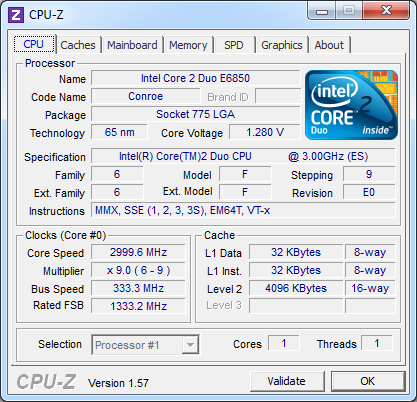Tom's CPU Architecture Shootout: 16 CPUs, One Core Each, And 3 GHz
The CPU landscape is really complex. Both AMD and Intel offer tons of different models. But how would today’s processors perform if they didn't have multiple cores? We take 16 different CPUs and compare them all using a single core running at 3 GHz.
Older Dual-Core Designs: AMD Brisbane, Intel Conroe, And Intel Wolfdale
AMD Brisbane, 65 nm (Athlon 64 X2 6000+, Rev. G2)
Brisbane was the last processor in AMD’s successful Athlon 64 X2 line. It had 512 KB L2 cache per core, and this particular model runs at 3.1 GHz. The Athlon 64 X2 6000+ requires a Socket AM2 interface and sports an integrated memory controller.
Intel Wolfdale, 45 nm (Core 2 Duo E8600, Rev. E0)
Intel used the code name Wolfdale for its die-shrunk 45 nm Core 2 design. Wolfdale simultaneously improved power efficiency and created room for more L2 cache. While Conroe had 4 MB of L2 cache, Wolfdale-based chips are equipped with 6 MB.
We're using the Core 2 Duo E8600, which runs at 3.33 GHz by default. However, by dropping the multiplier from 10x to 9x, we got it down to our 3 GHz target.
Intel Conroe, 65 nm (Core 2 Duo E6850, Rev. E0)
The Conroe core is what first replaced the troubled NetBurst design on the desktop. This processor actually marks a turning point in history, as it ended AMD’s dominance back in 2006 by delivering much more performance per clock than NetBurst, and by lowering power consumption significantly. Here we're using the Core 2 Duo E6850.
Get Tom's Hardware's best news and in-depth reviews, straight to your inbox.
Current page: Older Dual-Core Designs: AMD Brisbane, Intel Conroe, And Intel Wolfdale
Prev Page Modern Dual-Core CPUs: AMD Regor And Intel Clarkdale Next Page Outdated Dual-Core Designs: AMD Windsor And Intel Prescott

